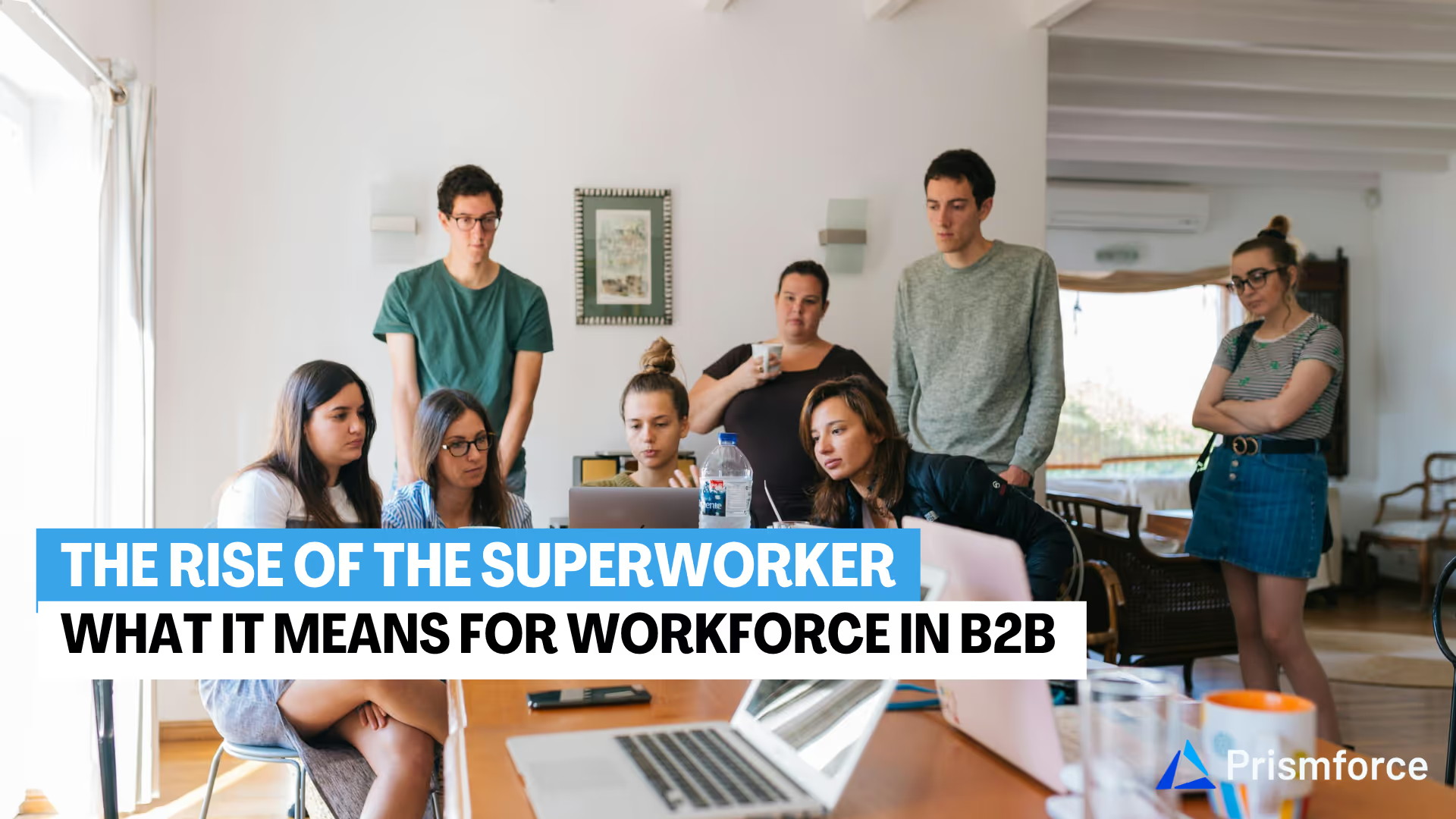
The modern tech industry is seeing a profound shift in how organizations approach talent acquisition and management. Amid the rapid adoption of artificial intelligence (AI), automation, and advanced software-as-a-service (SaaS) platforms, a new breed of professionals—often called Superworkers—is reshaping the way businesses operate.
These individuals boast a powerful blend of technical expertise, adaptability, and the agility to leverage emerging technologies for maximum impact. According to Josh Bersin, a global industry analyst known for his work on HR tech and workforce strategies, “Organizations need people who can learn fast, think creatively, and adapt to new contexts in real-time.” Superworkers perfectly embody this ideal, driving innovation and productivity at an unprecedented pace.
Who Is a Superworker?
A Superworker is a professional who exhibits a high degree of competence in both technical and soft skills, and who leverages cutting-edge technologies—particularly AI, automation, and SaaS tools—to drive exceptional outcomes. Superworkers are not just proficient users of technology; they embody a growth mindset, embracing continuous upskilling and reskilling to stay ahead of industry shifts. They focus on outcomes and efficiency, consistently delivering measurable results that align with business objectives.
Key Characteristics of a Superworker:
- Highly Skilled (Technical + Soft Skills): Able to deploy specialized technical knowledge—coding, data analysis, product management—while also exhibiting leadership, communication, and teamwork capabilities.
- Proficiency in AI, Automation, and SaaS Tools: Experienced in using platforms that automate routine tasks, streamline workflows, and enhance collaboration.
- Adaptable and Committed to Continuous Learning: Regularly invests time in mastering new technologies and refining domain-specific knowledge.
- Outcome-Focused: Prioritizes productivity and measurable impact over performing tasks for the sake of process alone.
Why Superworkers are Critical in B2B SaaS Industry
Speed-to-market and continuous product innovation have become essential competitive differentiators. Superworkers have emerged as indispensable assets for organizations striving to stay ahead. Their unique skill sets and growth mindsets make them catalysts for productivity, innovation, and collaboration. Below are the key reasons Superworkers are proving to be critical:
1. They Enable Dynamic, Skills-Based Workforce Planning
Traditional workforce planning, which relies on static roles and hierarchical structures, often lags behind the reality of modern SaaS operations. Products need to pivot swiftly based on customer feedback, market changes, or evolving technologies, making it imperative to have talent that can easily shift gears and take on multiple responsibilities.
- Adaptable to Rapid Changes: Superworkers thrive in agile environments, continually upskilling and reskilling themselves as new tools and methodologies emerge. This makes them ideal for organizations adopting Agile or DevOps methodologies, where cross-functional teamwork and quick iteration cycles are standard.
- Skills Over Roles: There’s a growing trend toward skills-based hiring and development, emphasizing what people can do over the narrow confines of a job title. By building an internal culture that rewards versatility, SaaS companies can maximize the potential of their Superworkers, who often excel at both technical and customer-facing tasks.
- Flexible Team Structures: The fluid, project-centric approach of modern SaaS product teams allows Superworkers to jump into new projects as soon as a business need arises, breaking down traditional organizational silos. This ensures that complex challenges—such as launching a new feature or migrating infrastructure—receive immediate and expert attention.
2. They Accelerate Innovation and Time-to-Market
Time-to-market can make or break a B2B SaaS product, especially in crowded categories like CRM, HR tech, or data analytics. Superworkers naturally excel in driving projects from conception to execution at speed because:
- Broad Technical Mastery: Proficiency in AI, automation, and SaaS tools lets Superworkers reduce time spent on repetitive tasks. They often orchestrate end-to-end workflows to automate processes, gather data-driven insights, and streamline deployment. This all contributes to faster product development cycles.
- Cross-Functional Collaboration: Superworkers aren’t just experts in one domain; they work seamlessly with various departments—engineering, marketing, customer success, and sales—breaking down barriers to innovation. This holistic perspective helps them pinpoint opportunities for product enhancements and coordinate faster rollouts, ultimately impacting revenue and customer satisfaction.
- Outcome-Focused Mindset: Unlike employees who may view success through siloed KPIs, Superworkers measure success based on product milestones, customer outcomes, and business impact. They proactively identify and remove bottlenecks, ensuring that each project phase meets critical deadlines without compromising quality.
3. They Improve Operational Efficiency
With an ability to juggle multiple tasks and quickly learn new technologies, Superworkers drive process improvements and reduce operational drag:
- Automating Manual Tasks: By harnessing advanced tools and scripting, they automate repetitive tasks such as data entry, reporting, or testing. This frees time for strategic work, ensuring teams focus on high-value activities that accelerate growth and customer retention.
- Streamlined Communication: Superworkers frequently play the role of a bridge across teams, relaying insights between tech and non-tech stakeholders.
- Resource Optimization: Because they understand the big picture and the detailed execution, Superworkers can advocate for the right allocation of budgets, tools, and training. This leads to leaner operations and maximized ROI across the board.
4. They Drive a Culture of Continuous Learning and Innovation
High-performing SaaS organizations recognize that constant evolution is crucial for staying relevant. Superworkers exemplify that mindset, often acting as early adopters or champions of new technologies:
- Promoting Knowledge Sharing: Superworkers often run internal workshops, provide mentorship to junior staff, or evangelize new tools. This raises the overall skill level of the team, fostering a culture of learning that benefits everyone.
- Adapting to Customer and Market Needs: With B2B clients expecting regular feature updates and responsive customer support, Superworkers step in to interpret market demands and pivot product roadmaps accordingly. Their agility helps organizations stay in sync with emerging customer requirements.
- Positive Influence on Talent Attraction and Retention: As LinkedIn’s Workplace Learning Report highlights, employees are more likely to stay at companies that invest in their professional growth. By building teams around Superworkers, companies project an image of innovation and career development, appealing to top-tier talent in a competitive job market.
5. They Enhance Strategic Decision-Making
Many Superworkers advance to leadership or advisory roles because they bridge the gap between data-driven insights and business strategy:
- Data-Informed Insights: Superworkers can interpret product usage data, customer feedback, and revenue metrics to inform strategic priorities.
- Risk Mitigation and Scenario Planning: Their holistic understanding of technology, operations, and finance positions them to anticipate potential risks—whether technical debt, regulatory compliance, or shifting market conditions—and propose proactive solutions.
- Championing Customer-Centricity: In B2B SaaS, customer retention and upselling can be as vital as acquiring new logos. Superworkers often engage closely with customers—through user testing or pilot programs—to ensure product roadmaps match real-world needs.
The Impact of Superworkers on Workforce Planning
Superworkers—professionals with advanced technical abilities, strong soft skills, and a high degree of adaptability—are transforming how organizations plan and allocate their talent. Below are key ways they influence modern workforce planning strategies:
- Skills-Centric Organization:
- Traditional role-based planning often fails to keep pace with rapidly evolving market demands.
- Superworkers thrive in project-oriented structures, where specific skills matter more than rigid job titles.
- By emphasizing capabilities and cross-functional expertise, leaders can align Superworkers to the most critical initiatives.
- Enhanced Agility and Responsiveness:
- Superworkers adapt quickly to market shifts, emerging technologies, or new product requirements.
- This agility helps teams pivot faster, shortening development cycles and accelerating time to market.
- A culture of learning and rapid feedback loops becomes standard practice, allowing continuous improvement.
- Cross-Functional Collaboration:
- Because of their diverse skill sets, Superworkers easily move between teams—bridging gaps between product, engineering, and customer success.
- Their holistic viewpoint fosters stronger communication and smoother handoffs, reducing operational bottlenecks.
- Optimized Resource Allocation:
- By automating routine tasks and prioritizing high-impact activities, Superworkers enable organizations to deploy talent more efficiently.
- This frees budgets and headcount for strategic roles, resulting in lean but highly effective teams.
- Long-Term Talent Retention and Culture:
- Superworkers often demand meaningful growth opportunities and a culture of continuous learning.
- Offering flexible career paths and advanced tools not only retains these top performers but also strengthens employer branding.
Challenges in Managing Superworkers
While Superworkers bring extraordinary value to B2B SaaS organizations, they also present unique management challenges. By recognizing potential pitfalls and implementing proactive strategies, companies can harness their potential while maintaining a balanced and productive environment.
1. High Expectations for Career Growth and Development
- Challenge: Superworkers tend to be lifelong learners and have ambitious professional goals. When development paths are unclear or progress stalls, frustration and disengagement can set in.
- Solution:
- Offer Personalized Development Plans: Design career pathways that allow Superworkers to explore diverse roles or specialized skill sets.
- Leverage Stretch Assignments: Encourage leadership or cross-functional projects that satisfy their thirst for growth.
- Formalize Mentorship Programs: Pair Superworkers with senior leaders to guide their strategic thinking and career trajectory.
2. Risk of Burnout Due to High Productivity Demands
- Challenge: Their ability to deliver exceptional results can lead to consistently heavy workloads. Over time, this may cause burnout, negatively impacting performance and morale.
- Solution:
- Flexible Work Arrangements: Allow remote or hybrid options to give Superworkers autonomy in managing their schedules.
- Monitor Workloads and Set Boundaries: Use project management tools (e.g., Asana, Trello) to ensure tasks are distributed evenly and deadlines are realistic.
- Promote Wellness and Resilience: Encourage breaks, time-off policies, and wellness initiatives to help balance high performance with mental well-being.
3. Difficulty Retaining Top Talent in a Competitive Market
- Challenge: Superworkers, with their specialized skill sets and proven track records, are often prime targets for recruiters. Retention becomes a struggle if they feel undervalued or lack growth opportunities.
- Solution:
- Supportive and Inclusive Workplace Culture: Foster an environment where continuous learning and innovation are celebrated, mistakes are seen as growth opportunities, and collaboration is highly valued.
- Competitive Compensation and Benefits: Align incentives and benefits with the market to acknowledge the unique contributions Superworkers make.
- Recognize Achievements Publicly: Appreciation and visibility for high-impact projects can reinforce the feeling of being valued.
How the B2B SaaS and Tech Services Industry Can Prepare for the Superworker Era?
Superworkers thrive in environments that emphasize cutting-edge technology, adaptability, and measurable outcomes. Below are practical strategies B2B SaaS and tech services organizations can adopt to align with this emerging workforce paradigm:
1. Invest in AI and Automation Tools
- Empower Employees with Advanced Tech:
Equip teams with automation platforms to streamline repetitive tasks. This frees Superworkers to focus on higher-value activities like innovation and problem-solving. - Adopt Continuous Learning Technologies:
Use AI-driven learning management systems to offer personalized training. Modern workers thrive when learning is embedded into daily workflows and made easily accessible.
2. Build a Talent Pipeline That Prioritizes Adaptability and Tech Proficiency
- Skills-Based Hiring and Development:
Shift from static role requirements to a capabilities-first approach. Assess candidates on their ability to learn quickly, solve complex problems, and collaborate across teams. - Nurture Internal Talent:
Create robust internal mobility programs, offering opportunities for current employees to experiment with new roles, learn AI tools, or acquire data analytics skills. - Partner with Educational Institutions:
Forge relationships with universities or coding bootcamps that emphasize hands-on, project-based learning. This ensures a steady pipeline of future Superworkers who are already trained in real-world scenarios.
3. Redefine Performance Metrics to Focus on Outcomes and Innovation
- Measure Impact Over Output:
Move beyond traditional metrics (e.g., hours logged, tickets closed) to emphasize quality, innovation, and customer satisfaction. - Implement OKRs (Objectives and Key Results):
Popularized by leading tech companies, OKRs tie individual and team goals to larger business outcomes. This encourages Superworkers to focus on driving measurable value. - Foster a Culture of Experimentation:
Encourage pilot projects and iterative learning. Celebrate both successes and failures to reinforce a mindset where continuous improvement is the norm.
4. Leverage Platforms to Streamline Workforce Planning
- Use Advanced Talent Intelligence Solutions:
Platforms like Prismforce offer AI-driven insights into employees’ skills, allowing you to match Superworkers to the most impactful projects. - Data-Driven Succession Planning:
Leverage predictive analytics to identify emerging leaders, track employee growth trajectories, and anticipate future talent needs. - Automate Administrative Tasks:
Integrations that handle payroll, benefits, and compliance free HR teams to focus on strategic initiatives—like developing career growth paths for Superworkers.
Supercharge Your Workforce with Prismforce
The Superworker era represents a fundamental shift for B2B SaaS talent strategies. Companies now face the challenge of not only hiring but also effectively deploying, upskilling, and engaging talent as they embrace skills-based planning, AI-driven automation, and cross-functional agility. Organizations must create environments where Superworkers thrive through continuous learning, intelligent talent matching, and real-time workforce visibility—otherwise, they risk losing top performers to more innovative competitors.
Prismforce provides a tailored AI-driven talent management platform that enables organizations to:
- Gain real-time visibility into skills and workforce planning
- Match Superworkers to high-impact roles
- Improve talent decisions
By integrating data-driven workforce planning with AI-driven talent insights, Prismforce helps companies future-proof their workforce, ensuring Superworkers thrive while optimizing overall operational efficiency and business impact.





